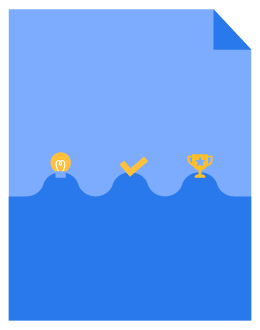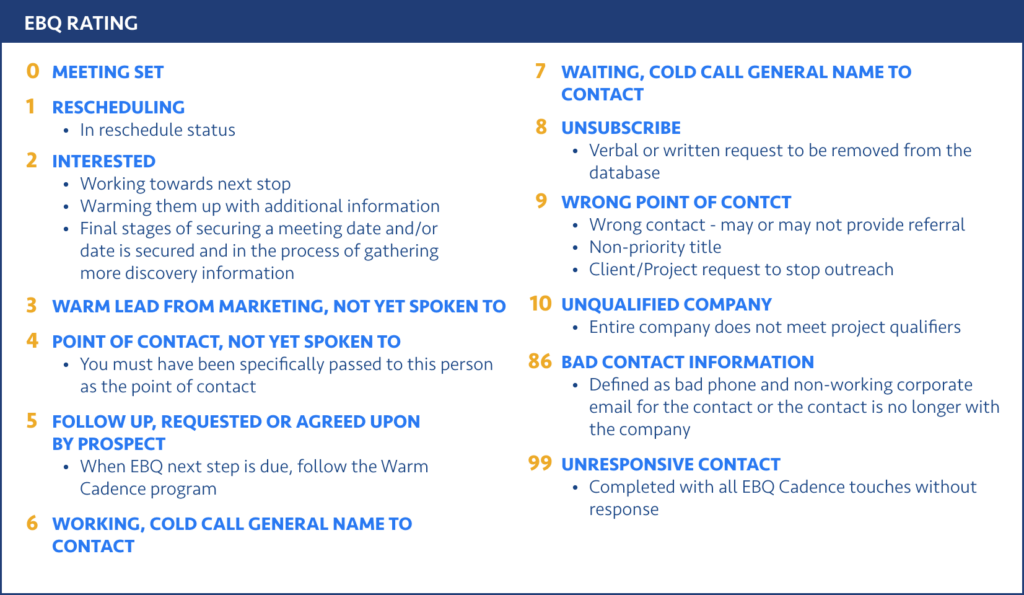Consideration Stage: Educate your Prospect


Tim Edwards
This post was originally published in January 2019 and has been updated for accuracy and comprehensiveness.
Now that your buyers have moved into the consideration stage, they are well aware of their business challenges and are considering their available options. The goal in the consideration stage is to educate the buyer about your product or service’s value and determine who will likely buy your solution.
Buyers are researching solutions and weighing the pros and cons of each option. Note that alternative solutions may not even be a direct competitor. They could be something the buyer decides to try on their own rather than buying a product or service.
To nurture your leads in the consideration stage, you need to answer the buyer’s questions of “Why do I need a product like yours?” and “Why is your product the best one?” Therefore, you should educate and inform your buyers about why your offering is the best solution to their problem compared to others.
Continue reading to learn how to lead your buyer through the consideration stage effectively.

Download the Ultimate Guide to the B2B Buyer’s Journey
With our guide, you will learn how to help your potential customers through the five stages of their buyer’s journey.
Appointment Setting Tips for the Consideration Stage
In the consideration stage, sales development representatives should spend time qualifying leads and setting sales meetings.
By now, prospects have either engaged with your marketing efforts or have been in casual contact with your SDR. Your appointment setters can now step in to lead them to the decision stage; however, they must first confirm that the leads are sales-qualified buyers.
When an SDR qualifies a lead, they convert cold leads and marketing-qualified leads (MQLs) to sales-qualified leads (SQLs). Most of the time, the information your SDR is finding is whether the contact needs your product or service and if they have some say in the purchase decision.
We use lead qualification criteria that are simplified versions of well-known sales methodologies like BANT (budget, authority, need, and timeframe). Since the final goal is scheduling a sales appointment, SDRs just need to determine that they’re talking to the right person at the right company. The closing rep can then take over and close the sale.
The SDR should ask discovery questions to see if the prospect aligns with your qualification criteria.
Ask the right discover questions:
- Where do you run into challenges with your current solution?
- How are you handling business challenges?
- If you were to make a purchase, who else would be involved in the decision process?
- What is your decision-making process?
During the conversation, the SDR can listen for any other information that may help the closing rep. Check out a full list of EBQ’s best SDR questions.
An SDR team can pre-qualify prospects for sales reps, allowing you to make the necessary number of touches to convert them to an SQL. We recommend generating a call cadence beyond 3-4 touchpoints for a B2B sales cycle. Many sales reps are focused on more qualified leads instead of continuing to stay in contact with colder leads. The two teams working together will make the process smoother and speed up the sale.
Consultative Selling Techniques to Help Buyers Evaluate
Now that your SDR has qualified a lead, your salespeople can step in to nurture the prospect and turn them into a purchase opportunity. The goal of the consideration stage is to prove the value of your product or service compared to your competitors and alternative solutions.
As an SDR, a conversion happens when they can set the sales meeting, focusing on selling the idea of learning more rather than actually making the purchase. When a prospect agrees to that meeting and starts working with the salespeople, the hard selling comes into play. The sales team will see conversions as turning the prospect into a paying customer.
In this stage, a salesperson should:
- Consult with buyers to identify their most urgent needs and obstacles they’d like to address before closing the deal.
- Give examples of how the offering will be financially beneficial in fixing their business challenge, focusing on cost concerns and ROI.
- Help the prospect understand how your solution will fit into their organization’s day-to-day operations.
Your salespeople have to convince a committee of decision-makers to convert, causing the nurturing process to take weeks or even months to get them to make a purchase. The length of the sales process depends on the offering and the individual accounts. Your salesperson already has the prospect’s attention. It’s time to strategically communicate to help move the lead into the decision stage.

Subscribe to EBQ's Bimonthly Newsletter

Subscribe to EBQ's Bimonthly Newsletter
The Best Marketing Techniques for Consideration Stage Buyers
The marketing efforts in the consideration stage should focus on educating the prospect and highlighting specific features that set your product apart. Explain in detail how your product or service will solve the buyer’s problem compared to your competitors.
Your inbound strategy can start to be a little more obvious about why your product or service is the best.
Techniques for reaching your buyers in the consideration stage:
Instructional content
| Research what your buyers are looking for in a solution like yours, then explain how it works. For example, if a buyer is searching for the right lead generation service, write a step-by-step guide on how to do so. Explain why your product or service is the best option while remaining impartial in order to build trust. |
|---|---|
Comparison grids
| Don’t be afraid to add a page to your site comparing your product or service to your competitors. Your buyers are already searching for this information and will have a positive experience if they can easily find it. This also shows that your company is an authority on the subject and that your buyers can trust what you tell them. |
Case studies
| Use past experiences to show your buyers how your product or service has helped others. A case study is a great way to showcase specific features and qualities of your offer and how it has solved challenges and improved ROI in the past. Dedicate a space on your website for buyers to find your case studies, link them in relevant content, and give them to salespeople to use as a resource. |
Although some buyers may not be familiar with all of their options in the consideration stage, some have done their research and been exposed to your brand. Focus on targeting prospects who know of your brand and want to learn more. Aim to keep your brand at the forefront of their mind so that they will continue to be interested in potentially making a purchase.
Email automation is a useful technique to stay relevant to your prospects. At EBQ, we use personalized email campaigns to continuously engage with our prospects, sending them relevant content to build trust in our brand.
Marketing automation is helpful because it’s designed to nurture leads through conditional logic. We can avoid pestering our prospects by configuring an email to wait to send another if they don’t open the first email. A useful tool is Marketing Cloud Account Engagement; you can learn more about it in our B2B Guide to Marketing Automation.
How to create a lead qualification system
A lead qualification system tracks how ready a lead is to make a purchase. Creating a lead scoring system will help keep your sales and marketing teams on the same page as they nurture prospects.
At EBQ, we have created an in-depth system that allows us to determine the level of interest a prospect has, where to prioritize our outreach efforts, and how to create an appropriate follow-up cadence. The “cold lead vs. warm lead” measuring system is outdated and won’t give you detailed information on how best to use your time and money.
You can read more about this in our Lead Qualification Criteria, Process, & Tools blog if you want more information on setting up your scoring system.

Put your lead scoring system to use
A lead scoring system is a numerical point system that tracks how much a prospect interacts with your website, assets, and brand. At EBQ, our marketing team uses our lead scoring system to track engagement and convert website visitors to marketing-qualified leads (MQLs).
How we use our lead scoring system:
- Add points to their lead in Marketing Cloud Account Engagement when visitors view multiple pages on our site or download our branded content.
- Convert prospects to MQL when they reach a certain lead score (on our scale, it’s a 3).
- Funnel the MQL to the SDR queue.
Integrating Marketing Cloud Account Engagement with your Salesforce CRM allows the two platforms to communicate effectively with each other and gives the sales and marketing teams a single view of each buyer.
Establishing a lead scoring system is vital for your team’s success. However, we understand that it can be a complex process. Our Marketing Specialists can help you set up a lead-scoring system that makes sense for your business.

Download the Ultimate Guide to the B2B Buyer’s Journey
With our guide, you will learn how to help your potential customers through the five stages of their buyer’s journey.
Nurturing leads to a decision
The consideration stage is the time to educate your buyers. They are aware of their problem, so now you must make them aware of your solution. Your team should set their first meetings by asking the right questions, nurturing the prospect into a purchase opportunity, marketing your offer to stand out against competitors, and tracking the progress of each lead.
If your team successfully nurtures the buyer through the consideration stage, they have gotten even closer to celebrating a closed sale. To streamline this process and optimize your results, outsourced SDR services are a great option to consider. In the next chapter, we will discuss the decision stage and how your work thus far will set you up for success.



